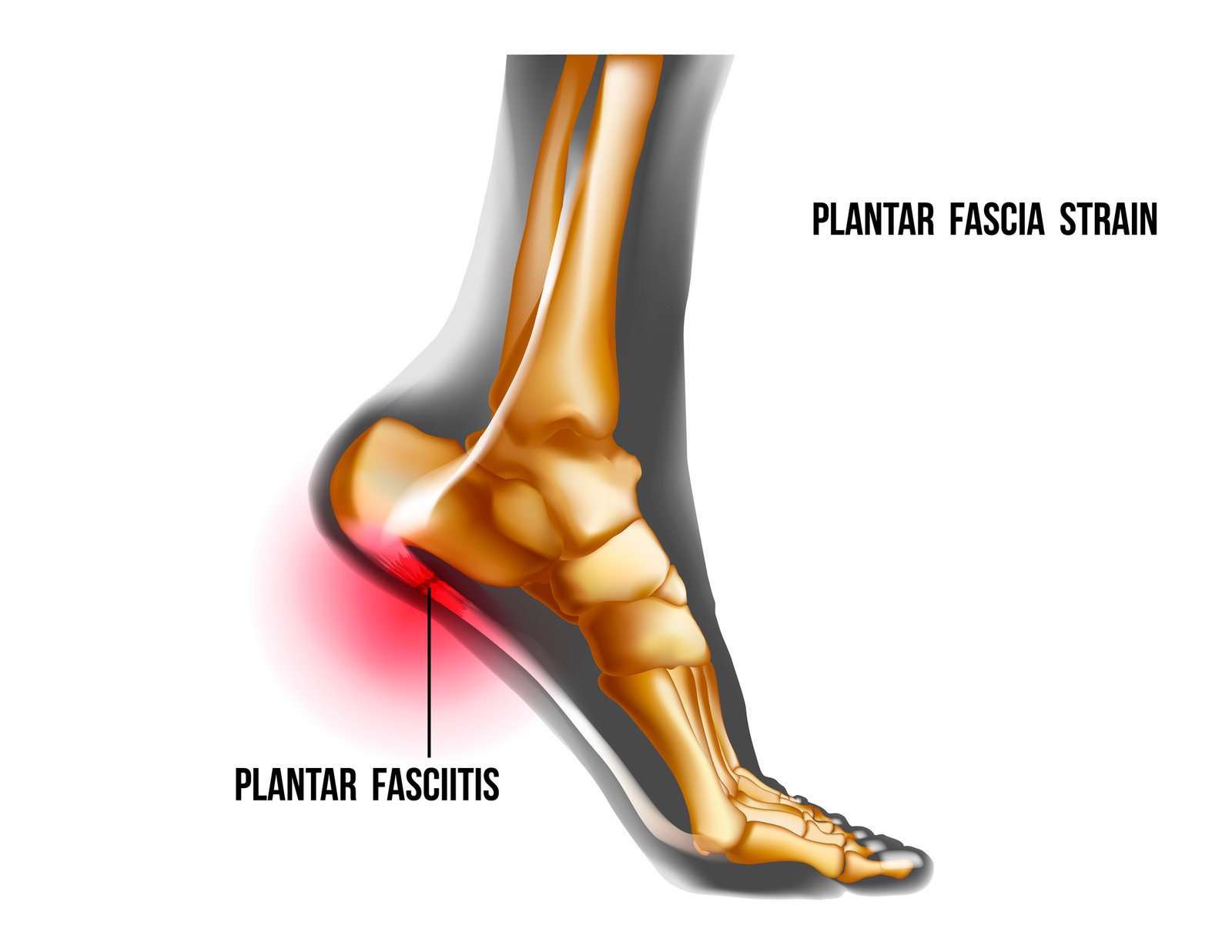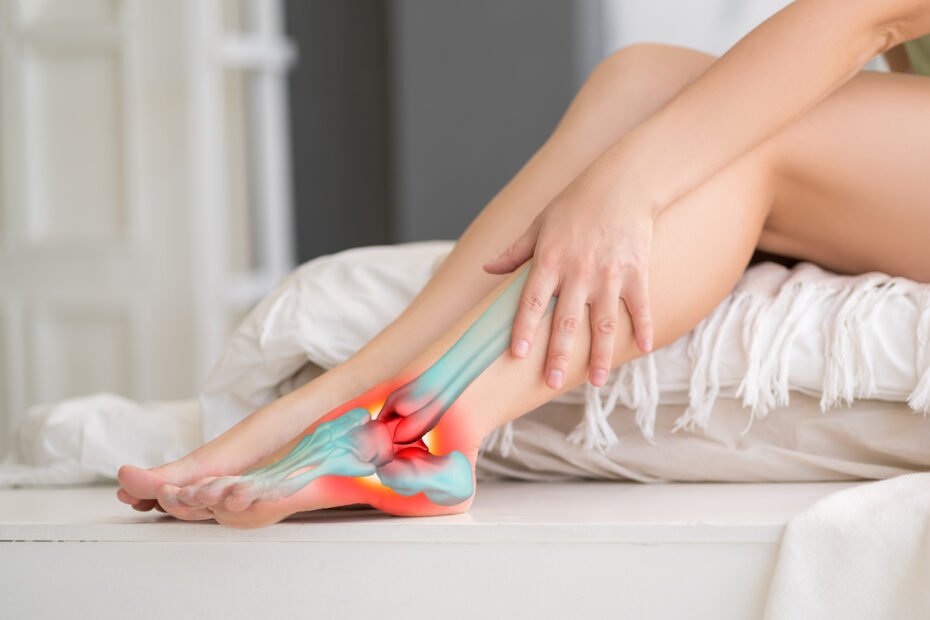Plantar fasciitis with calf pain is a common condition that affects many people. It can be caused by various factors, including overuse, poor footwear, and tight muscles. If you’re experiencing this condition, it’s essential to understand what plantar fasciitis is and its connection with calf pain. In this blog, we will take a deep dive into the anatomy of this area of our body. We’ll also discuss the symptoms and causes of this condition in detail. Moreover, we’ll help you debunk some misconceptions about this painful condition. We’ll also provide you with treatment options and prevention strategies to combat this condition effectively. So let’s get started!
Understanding Plantar Fasciitis and Calf Pain
Understanding the connection between foot pain and chronic pain in the lower limb is essential. The plantar fascia’s role in causing calf pain due to stress fracture or tight calf muscles must be comprehended. Nonsurgical options like simple stretches and arch support can effectively manage these conditions, making it crucial to identify symptoms promptly.
The Anatomy of Plantar Fasciitis
The plantar fascia, a crucial ligament connecting the heel bone to the toes, supports the foot arch. Inflammation and tightness can lead to discomfort and burning pain. The windlass mechanism and calf pain in plantar fasciitis are significant. This condition commonly affects runners, athletes, or individuals who stand for long periods.

The Connection between Plantar Fasciitis and Calf Pain
The discomfort and inflammation in the plantar fascia can impact the gait and foot function, causing pain in the arch and calf. Tight leg muscles exacerbate plantar fasciitis symptoms, leading to calf pain associated with stress on the achilles tendon and foot arch. Understanding this interplay is vital for holistic treatment.
Symptoms of Plantar Fasciitis with Calf Pain
Identifying the symptoms of plantar fasciitis, such as sharp pain at the bottom of the heel, is crucial for early intervention. Plantar fasciitis pain in the calf muscle may manifest as discomfort and burning pain in the lower back of the leg. Recognizing the symptoms of this condition, including pain in the arch and calf, is essential for accurate diagnosis and treatment.
Identifying Plantar Fasciitis Symptoms
The initial steps of the day and discomfort in the bottom of your foot are common indications of plantar fasciitis. Prolonged standing or walking on hard surfaces can worsen pain, especially in the arch. Stiffness and discomfort in the arch are crucial symptoms for early diagnosis.
How Calf Pain Complements Plantar Fasciitis Symptoms
Calf pain in plantar fasciitis may stem from inflammation in the foot’s arch and swelling in the plantar fascia. This pain can signal tightness and inflammation in the calf muscles and achilles tendon, and understanding this connection is crucial for comprehensive treatment. The symptoms of both conditions often overlap, emphasizing the need for accurate diagnosis and effective treatment.
Causes of Plantar Fasciitis with Calf Pain
The excessive stress on foot arch and calf muscles can cause plantar fasciitis and calf pain. Gait abnormalities, high arch, flat feet, and tight Achilles tendon are common factors. Understanding these causes is crucial for targeted treatment strategies to address chronic pain in the bottom of your foot and tight calf muscles.
Common Causes of Plantar Fasciitis
Repetitive stress on the foot’s plantar fascia from activities like running and jumping can cause inflammation and pain in the heel, leading to plantar fasciitis. Overuse of the plantar fascia, along with factors like tight achilles tendon and high arch, often results in both plantar fasciitis and calf pain, indicating a clear connection between the two.
Why Plantar Fasciitis Can Lead to Calf Pain
The inflammation and discomfort in the plantar fascia can radiate, causing pain in your lower leg. Tightness and inflammation in the calf muscles and foot arch can be a consequence of this condition. Understanding this connection is crucial for effective treatment plans. Plantar fasciitis can lead to discomfort and ache in the lower leg, making it essential to address holistically.

How long does it take to recover from plantar fasciitis with calf pain?
Recovery time for plantar fasciitis with calf pain can vary depending on the severity of the condition and how well it is managed. On average, with proper treatment and rehabilitation, most people can expect to see improvement within 6 to 12 months. However, individual experiences may vary.
Misconceptions about Plantar Fasciitis and Calf Pain
Misconceptions about plantar fasciitis and calf pain are abundant. It’s not just athletes who suffer, and it doesn’t only affect older individuals. The belief that it resolves on its own delays treatment. Inactivity is not the sole solution; proper management is essential. These misconceptions can lead to inadequate care and prolonged discomfort.
Differentiating Between Heel Spurs and Plantar Fasciitis
Differentiating between heel spurs and plantar fasciitis can be challenging due to overlapping symptoms. Heel spurs are bony growths, while plantar fasciitis is the inflammation of the plantar fascia. X-rays aid in differentiation, yet misdiagnosis can occur. Plantar fasciitis often causes sharp, stabbing pain, especially in the morning, whereas heel spurs result in a dull ache that worsens throughout the day.
Reasons for Misdiagnosis of Plantar Fasciitis
Misdiagnosis of foot pain often occurs due to similar symptoms as other conditions. Lack of proper diagnostic techniques can lead to errors. Not considering calf pain as a symptom can result in misdiagnosis. Confusion between heel spurs and plantar fasciitis contributes to diagnostic errors. Overlooking gait and foot arch issues leads to misdiagnosis.
Treatment Options for Plantar Fasciitis with Calf Pain
Treatment options for foot pain and chronic pain in the bottom of your foot include rest, ice, orthotics, and simple stretches. Physical therapy effectively treats tight calf muscles and achilles tendonitis, while corticosteroid injections alleviate severe cases. Shockwave therapy, ultrasound treatment, and platelet-rich plasma injections offer nonsurgical solutions, reducing the need for surgery.
Conservative Treatments for Plantar Fasciitis and Calf Pain
Conservative treatments include nonsteroidal anti-inflammatory drugs (NSAIDs) to reduce inflammation, regular stretches, and foot massages for relief. Arch support, gel heel pads, and supportive shoes aid in managing the discomfort. Additionally, taping the foot and calf muscles can help alleviate the symptoms.
When to Consider Surgery for Plantar Fasciitis
Surgery for plantar fasciitis is an option when conservative treatments fail to provide relief. In severe cases where nonsurgical treatment doesn’t work, releasing the tight plantar fascia ligament through surgery may be necessary. Surgical intervention offers a solution for chronic and debilitating foot condition, especially when other measures are unresponsive.

Prevention Strategies for Plantar Fasciitis with Calf Pain
Prevention strategies for plantar fasciitis with calf pain include regular stretches and foot exercises to prevent chronic tenderness. Maintaining a healthy weight, wearing supportive footwear, and gradual progression in physical activities can reduce the risk of stress fractures. Additionally, using orthotic insoles and proper warm-up routines before physical activities aid in prevention.
Lifestyle Modifications to Prevent Plantar Fasciitis
To prevent this painful condition, limit prolonged standing and high-impact activities. Wear supportive shoes with adequate arch support and cushioning, and incorporate low-impact exercises into your routine. Avoid walking barefoot on hard surfaces and uneven terrain, and maintain good posture and foot alignment. These lifestyle modifications can significantly reduce the risk of developing foot pain and chronic pain.
How Can Regular Exercise Help in Preventing Plantar Fasciitis with Calf Pain?
Regular exercise plays a crucial role in preventing this delibilating foot condition. By strengthening the calf muscles and the plantar fascia, regular physical activity reduces the risk of developing these conditions. Engaging in foot and calf stretches, improving muscle flexibility, and promoting healthy circulation through exercise are effective strategies for prevention. Incorporating balance and stability exercises further supports the prevention of this condition.

Conclusion
To effectively treat plantar fasciitis with calf pain, it is crucial to understand the root causes and implement appropriate solutions. Maintaining a healthy lifestyle, including regular exercise and proper footwear, can play a significant role in preventing this condition. Additionally, early diagnosis and conservative treatments such as physical therapy, stretching exercises, and orthotic devices can alleviate symptoms and promote healing. In some cases, surgery may be necessary for severe or persistent cases. By staying informed and proactive, you can take control of your foot health and reduce the risk of developing this painful condition. Remember, prevention is key, and taking care of your feet is an investment in your overall well-being.
I hope you found this blog helpful and please feel free to comment and share.
Thanks for reading!
 | Tracy J. Founder, The heel GP |
